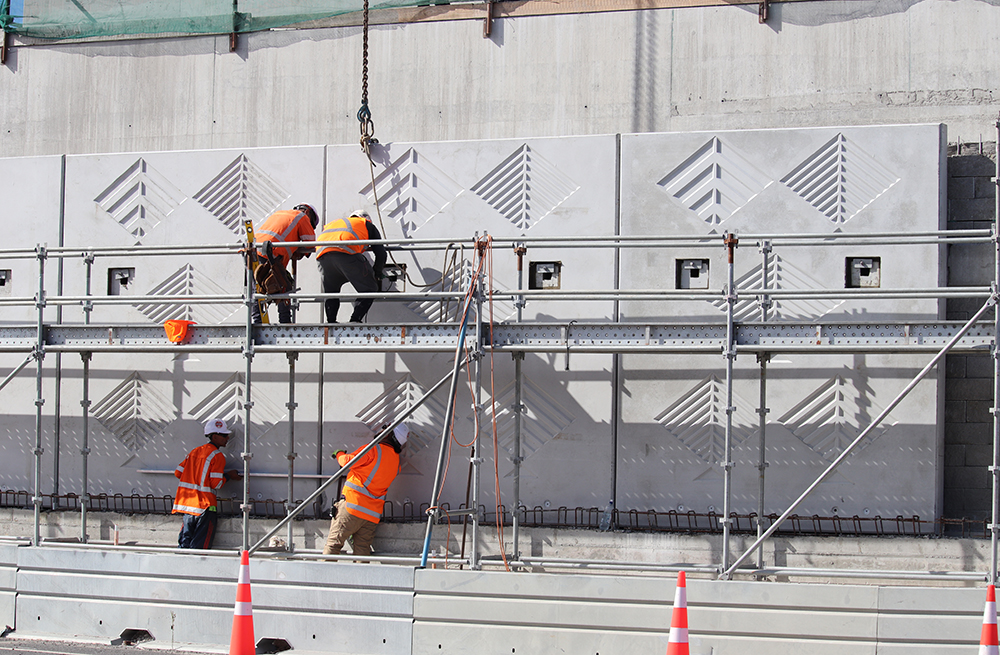
Artists: Linda Munn and Maraea Timutimu
Pātiki (flounder) and pāpaka (mud crab) patterns feature on ramps at the Bayfair roundabout and on Te Maunga interchange concrete barriers.
Pātiki and pāpaka were once abundant in the surrounding harbour and are both symbols of kaitiaki (guardians) for the people of Ngā Pōtiki and Ngāi Tukairangi. These two creatures are the main source of inspiration for this mahi toi.
Originally expressed as realistic, organic forms placed together in various arrangements, the creatures have been abstracted and refined, repeated and re-arranged as if in formation.
They are physically embedded – imprinted – in the concrete panels; crawling, marching over the skin of the flyover, giving prominence to the forms as a key historical resource for mana whenua while giving new users of this space a glimpse of the kaimoana that once was.
Local artists Linda Munn and Maraea Timutimu translated the meaning into something the concrete pre-casters could bring to life on the panels, which measure up to 7.8 metres high and weigh up to 11.6 tonnes.
The first precast concrete panels installed can be seen on the retaining wall at the Bayfair roundabout. More are currently being installed on the flyover ramps and, once finished, will be present on all the flyover ramp walls. The narrative is also present on the SH2/29A Te Maunga interchange concrete barriers.

“The moving tides reflect the intergenerational cycle and ongoing whakapapa of generations that move on and new generations that emerge.The sea was traditionally our most common point of reference, our food basket and the highway that we traversed within Tauranga Moana and Aotearoa.
Moana meets the whenua and reflects the history of the sea as our traditional highway.
Kōhatu Mauri was a practice around the placement of the mauri (life essence) into stone.
In this way, the forms cast in the concrete panels acknowledge the mauri of our tupuna (ancestors) through our local narratives and food sources.
The durability of concrete is suggestive of the permanence of the highway, art and also the permanence of people and environment.”